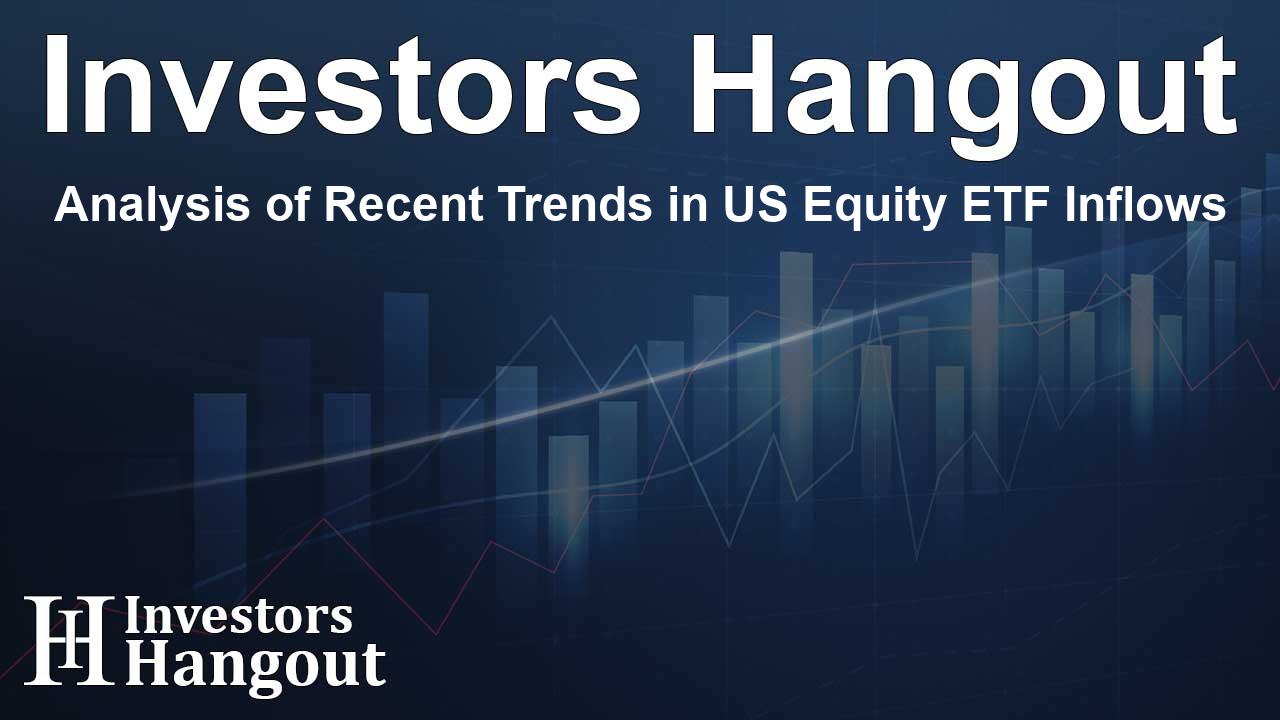Understanding Recent Trends in US Equity ETF Inflows
Recent data from Jefferies has shed light on the evolving landscape of equity investments in the US, which reveals some intriguing trends. For the week leading up to the new year, the retail inflows, which exclude money markets, amounted to $20.7 billion. This figure showcases a notable decline compared to the impressive $59.9 billion reported the week before.
Engagement with ETFs and Mutual Funds
While retail inflows dipped, mutual funds, again excluding money markets, experienced outflows totaling $4.8 billion. This shift comes after a previous week where inflows reached $36.6 billion, marking a stark change in investment behavior.
Attraction of Exchange-Traded Funds
Exchange-traded funds (ETFs), on the other hand, are witnessing an ongoing wave of capital investment. With an inflow of $25.6 billion for the reported week, this further surpassed the $23.2 billion from the week before. This consistent performance marks a robust 37-week streak of positive inflows for ETFs, underscoring their growing popularity among investors.
Current Trends in the Market
Money market funds have also experienced a considerable rise in inflows, garnering $26.1 billion, demonstrating a significant uptick from the previous week's $18.1 billion. Such trends indicate a definite shift toward liquidity and security amid evolving market conditions.
Equity Mutual Funds Performance
In the realm of equity mutual funds, the situation has appeared less favorable. These funds witnessed outflows of $2.4 billion, which is a stark contrast to the robust $37.8 billion inflow reported just a week earlier. This drastic change indicates a fluctuating trust among investors toward equity-based mutual funds.
International Dynamics
As for international mutual funds, they recorded outflows of $0.7 billion, switching course from the $0.2 billion inflow the week prior. This trend reveals a cautious stance among investors regarding international equities. Nevertheless, international equity ETFs still managed to attract $1.6 billion, although this represented a decrease from the $3.6 billion seen the previous week.
Conclusion on ETF Trends
Despite fluctuations in mutual fund investments, US equity ETFs continue on their impressive trajectory of inflows, logging their 20th consecutive week of positive performance. Such resilience indicates that many investors are still finding solace in ETFs amidst the changing tides of the investment landscape.
Frequently Asked Questions
What are the latest trends in US equity fund inflows?
Recent data indicates a decline in retail inflows while ETFs continue to attract significant capital.
How long have ETFs seen positive inflows?
ETFs have now recorded positive inflows for 37 consecutive weeks.
What was the performance of mutual funds recently?
Mutual funds experienced outflows of $4.8 billion, reversing the positive trend of the previous week.
How did international funds perform?
International mutual funds faced outflows of $0.7 billion, while international equity ETFs attracted $1.6 billion.
What are the implications of these trends?
The ongoing inflows to ETFs suggest investor confidence is shifting towards these vehicles, likely due to their flexibility and accessibility.
About Investors Hangout
Investors Hangout is a leading online stock forum for financial discussion and learning, offering a wide range of free tools and resources. It draws in traders of all levels, who exchange market knowledge, investigate trading tactics, and keep an eye on industry developments in real time. Featuring financial articles, stock message boards, quotes, charts, company profiles, and live news updates. Through cooperative learning and a wealth of informational resources, it helps users from novices creating their first portfolios to experts honing their techniques. Join Investors Hangout today: https://investorshangout.com/
Disclaimer: The content of this article is solely for general informational purposes only; it does not represent legal, financial, or investment advice. Investors Hangout does not offer financial advice; the author is not a licensed financial advisor. Consult a qualified advisor before making any financial or investment decisions based on this article. The author's interpretation of publicly available data shapes the opinions presented here; as a result, they should not be taken as advice to purchase, sell, or hold any securities mentioned or any other investments. The author does not guarantee the accuracy, completeness, or timeliness of any material, providing it "as is." Information and market conditions may change; past performance is not indicative of future outcomes. If any of the material offered here is inaccurate, please contact us for corrections.
